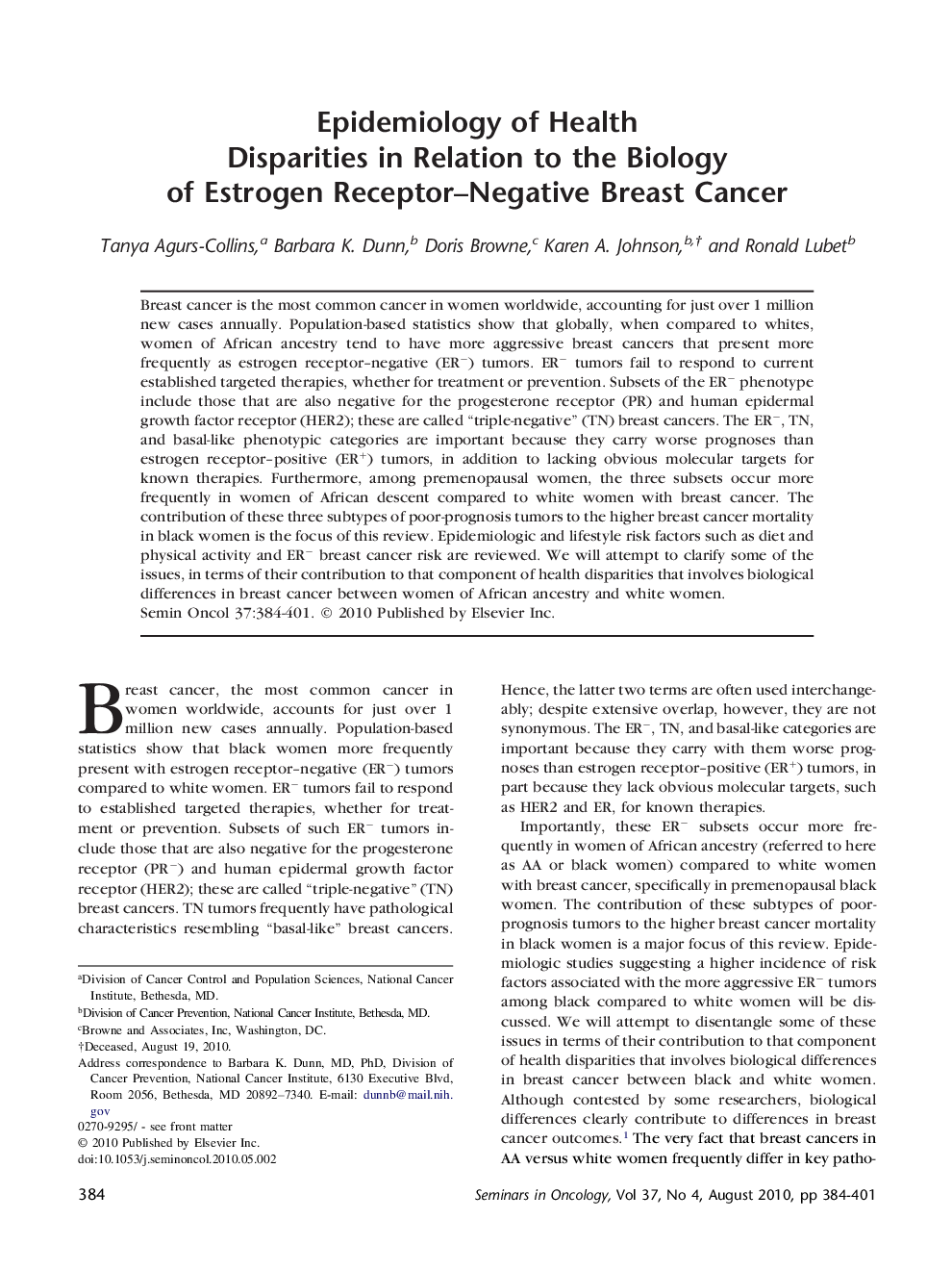| Article ID | Journal | Published Year | Pages | File Type |
|---|---|---|---|---|
| 2162499 | Seminars in Oncology | 2010 | 18 Pages |
Abstract
Breast cancer is the most common cancer in women worldwide, accounting for just over 1 million new cases annually. Population-based statistics show that globally, when compared to whites, women of African ancestry tend to have more aggressive breast cancers that present more frequently as estrogen receptor-negative (ERâ) tumors. ERâ tumors fail to respond to current established targeted therapies, whether for treatment or prevention. Subsets of the ERâ phenotype include those that are also negative for the progesterone receptor (PR) and human epidermal growth factor receptor (HER2); these are called “triple-negative” (TN) breast cancers. The ERâ, TN, and basal-like phenotypic categories are important because they carry worse prognoses than estrogen receptor-positive (ER+) tumors, in addition to lacking obvious molecular targets for known therapies. Furthermore, among premenopausal women, the three subsets occur more frequently in women of African descent compared to white women with breast cancer. The contribution of these three subtypes of poor-prognosis tumors to the higher breast cancer mortality in black women is the focus of this review. Epidemiologic and lifestyle risk factors such as diet and physical activity and ERâ breast cancer risk are reviewed. We will attempt to clarify some of the issues, in terms of their contribution to that component of health disparities that involves biological differences in breast cancer between women of African ancestry and white women.
Related Topics
Life Sciences
Biochemistry, Genetics and Molecular Biology
Cancer Research
Authors
Tanya Agurs-Collins, Barbara K. Dunn, Doris Browne, Karen A. Johnson, Ronald Lubet,
